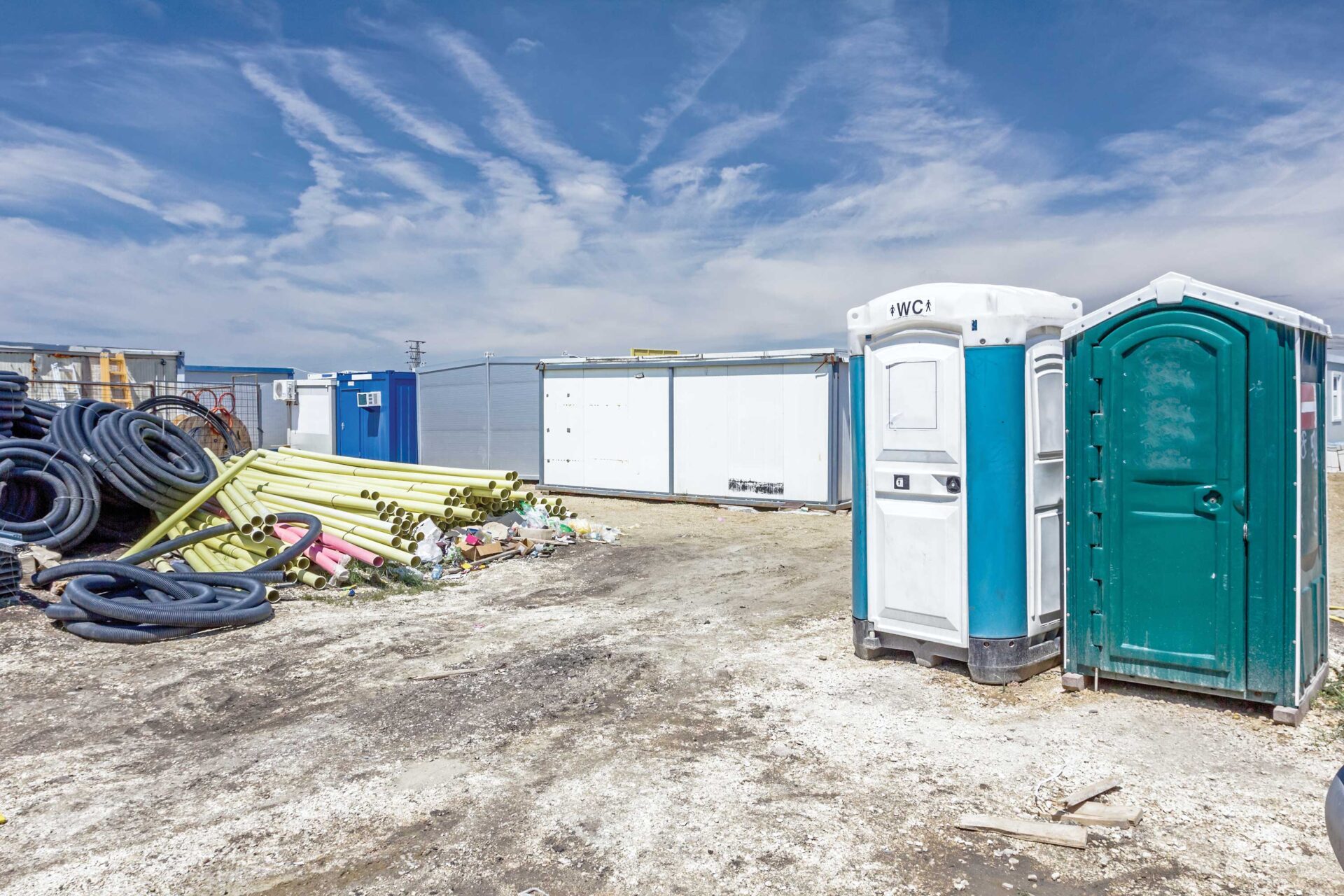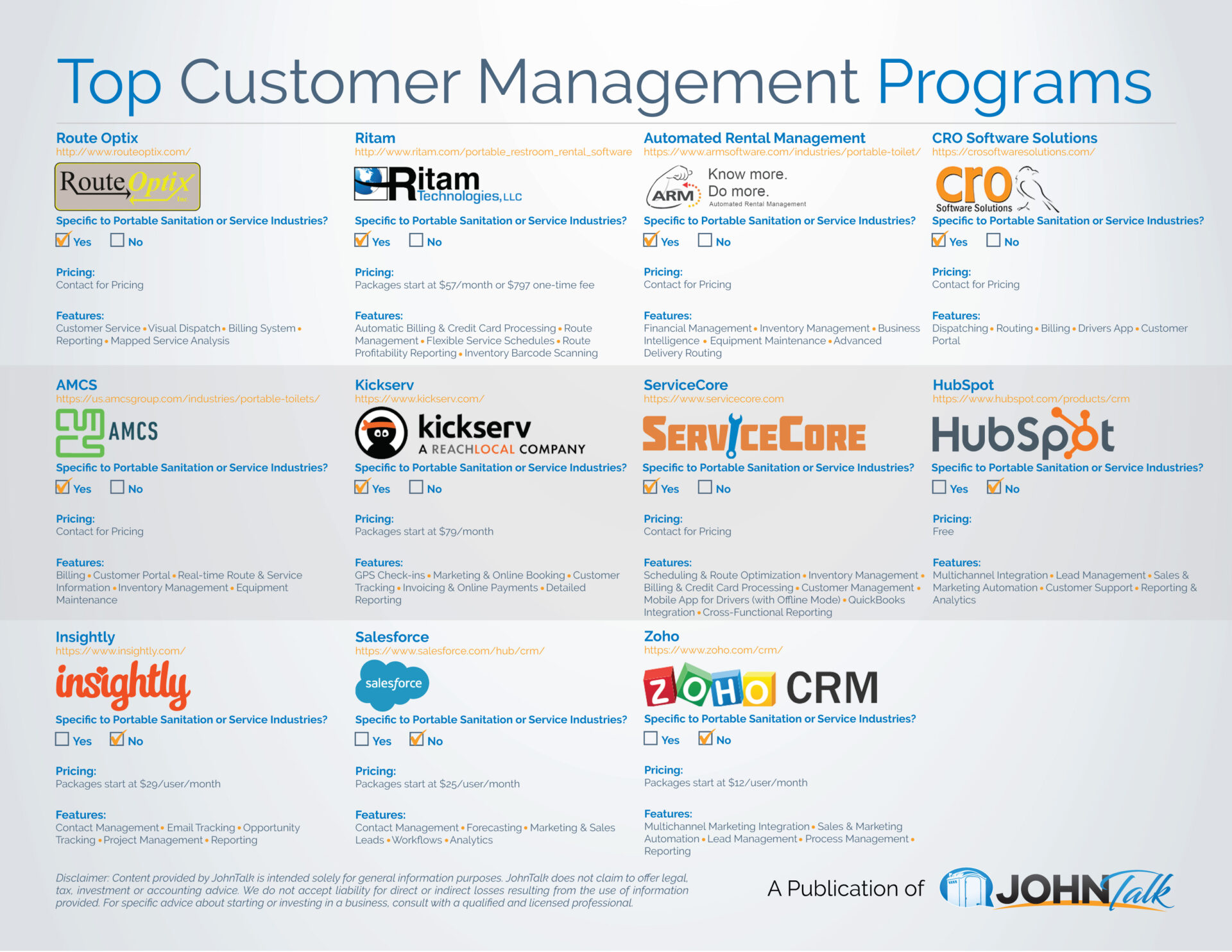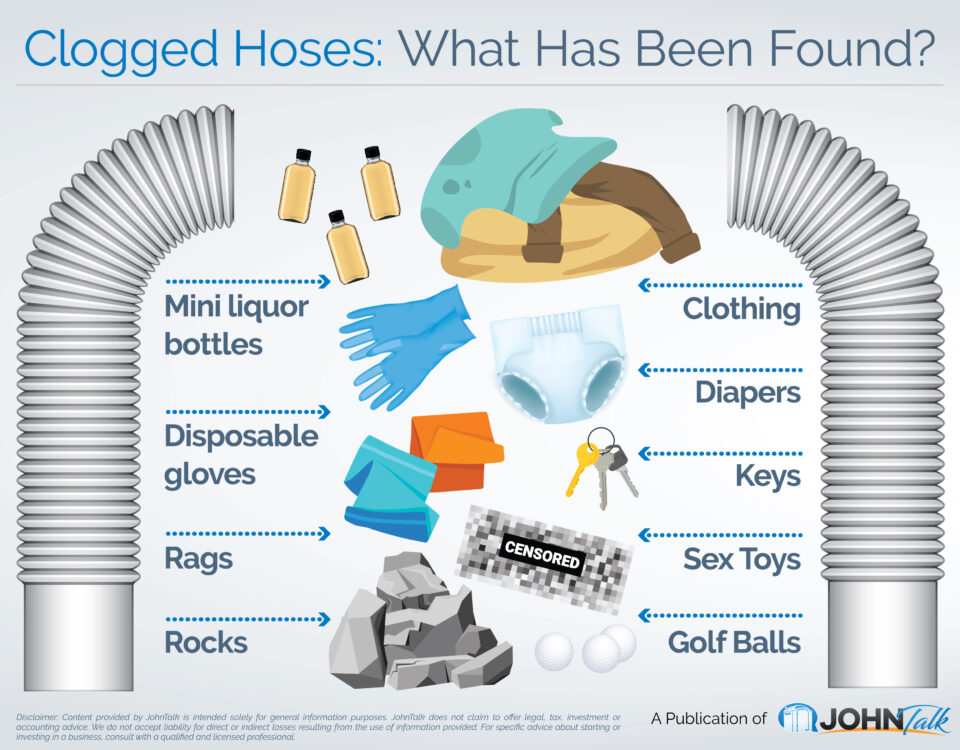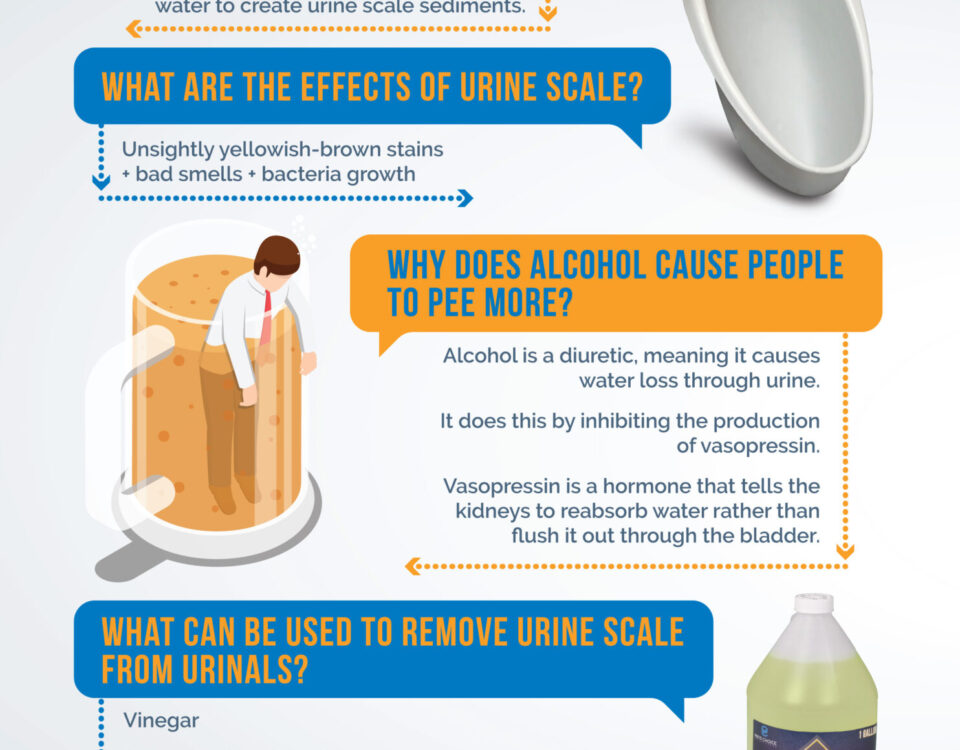
How to Refurbish a Standard Unit
July 23, 2018
INFOGRAPHIC: Top Customer Management Programs
July 23, 2018Have you ever heard the term porta-potty blue used to describe the color of someone’s eyes or a body of water? Maybe you’ve listened to friends lamenting over the blue liquid splashing their bum while using a portable restroom. Across social media and the web users joke about the familiar blue water in a portable toilet. As a PRO, you’ve undoubtedly had a customer ask, “Why is the waste tank water blue?” Let’s dive into the science behind odors, deodorizers, and how it all works.
Why Waste Smells
The amount and intensity of the odors stem from the mixture of the waste matter and the number of particles. According to Compound Interest, solid waste is 75% water and 25% solids. Depending on what users consume, fatty acids, sulfur-containing, and nitrogen-containing compounds make up waste. All these delightful combinations of molecules create smells that PROs want to avoid.
Once this waste enters the holding tank, bacteria multiply. The increasing number of molecules adds to the disagreeable odor. If left to its own devices (no deodorizer) the smell can become unbearable.
How the Deodorizer Fights Odors
Let’s cut to the nitty-gritty. When you purchase a deodorizer, whether it’s liquid, packs, pucks or tabs, it contains similar types of ingredients. Biocides, dye, fragrance, and surfactants are common in deodorizers.
- Biocides: The active ingredients in deodorizers include types of biocides. These chemical or biological enzymes are antimicrobial products. Their primary purpose is to control organisms and hinder bacterial growth. They do this by getting into the particles and disrupting their internal or external structure. By destroying the particles, odors are kept under control. Biocides are the power behind controlling bacteria growth.
- Fragrances keep lingering odors in check. They provide a refreshing smell that’s activated as soon as matter hits the water. The primary purpose of a fragrance is to keep both the waste tank liquid and the air above the water smelling as fresh as possible. However, you can’t pour a scent in the portable toilet and expect it to be sufficient on its own.
- Surfactants work by evenly dispersing the fragrance. Think of how oil pools in one area on top of the water. Many fragrances react in the same way, which is why a surfactant is essential. This compound attaches to the fragrance molecules and mixes them in the liquid. A bonus is that some surfactants aid in more efficient distribution of biocides.
- Dyes create the deep blue color associated with portable restroom units. The dark color hides waste. Companies like Walex use a shade of blue that they’ve trademarked. The blue dye helps with a customer’s perception of cleanliness and symbolizes sanitary conditions.
Get the JohnTalk “ALL-ACCESS PASS” & become a member for FREE!
Benefits Include: Subscription to JohnTalk Digital & Print Newsletters • JohnTalk Vault In-Depth Content • Full Access to the JohnTalk Classifieds & Ask a PRO Forum
Scientific Advances in Cleaning and Deodorizing
Experts in the portable sanitation supply industry update their products to fit their customers’ needs. We’ve seen a shift from using the OSHA-regulated formaldehyde to using biodegradable and environmentally friendly deodorizers.
Ingredients may include beneficial enzymes that eat away at solids, along with microbes and biological additives. These products are widely-accepted at waste treatment plants and give a portable restroom company the opportunity to promote their small environmental footprint as a selling point.
The deodorizer, while the butt of many jokes, is a familiar shade of blue that customers associate with portable restroom units. However, it’s more than a dye and fancy fragrance. Inside your waste tank, both at the surface and deep down, the deodorizer keeps your unit smelling fresh. The next time a customer asks why the water is blue, tell them it’s the formula that keeps their unit clean, sanitary, and odor-free day after day.
Looking to Take Your Portable Restroom Business to the NEXT LEVEL? Download our FREE Guide: “Your Guide to Operating A Portable Restroom Business.”
Thinking About GETTING INTO the Portable Restroom Industry? Download our FREE Guide: “Your Guide to Starting A Portable Restroom Business.”




